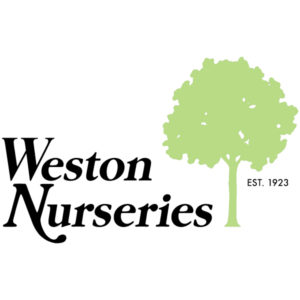Trees are everywhere in New England and for that reason, we probably don’t give them much thought, other than maybe to note things such as beautiful flowers, fall color, or impressive size. However, trees offer us a number of benefits, which extend beyond their visual interest and curb appeal.
Not only do they absorb carbon dioxide and release oxygen through the process of photosynthesis, but simultaneously, they also absorb and store pollutants, thus helping to clean the atmosphere. In addition, the canopy of large trees helps to prevent erosion and flooding by lessening the effect of heavy downpours.
“The best time to plant a tree was 20 years ago. The second best time is now.”
― Chinese proverb
Large deciduous trees provide welcome shade in summer, and placed on the south and west side of houses will help reduce air-conditioning costs, while allowing solar gain in winter when they are leafless. Trees in urban environments also help lower temperatures. Shade trees in urban settings help to lower asphalt temperatures and make the environment more comfortable. Research has shown that trees in parking lots can reduce asphalt temperatures by up to 36℉, and car interior temperatures by up to 47℉.
Large evergreen trees can also be used as windbreaks, and when placed on the north or north-western side of houses will also help to reduce heating costs in winter by reducing the impact of cold winds. Large trees in general also act as screens to block noise and provide privacy.
So if you are looking for a large tree for any of the above reasons, or just because you want an impressive tree to beautify your yard, these are some you could consider.
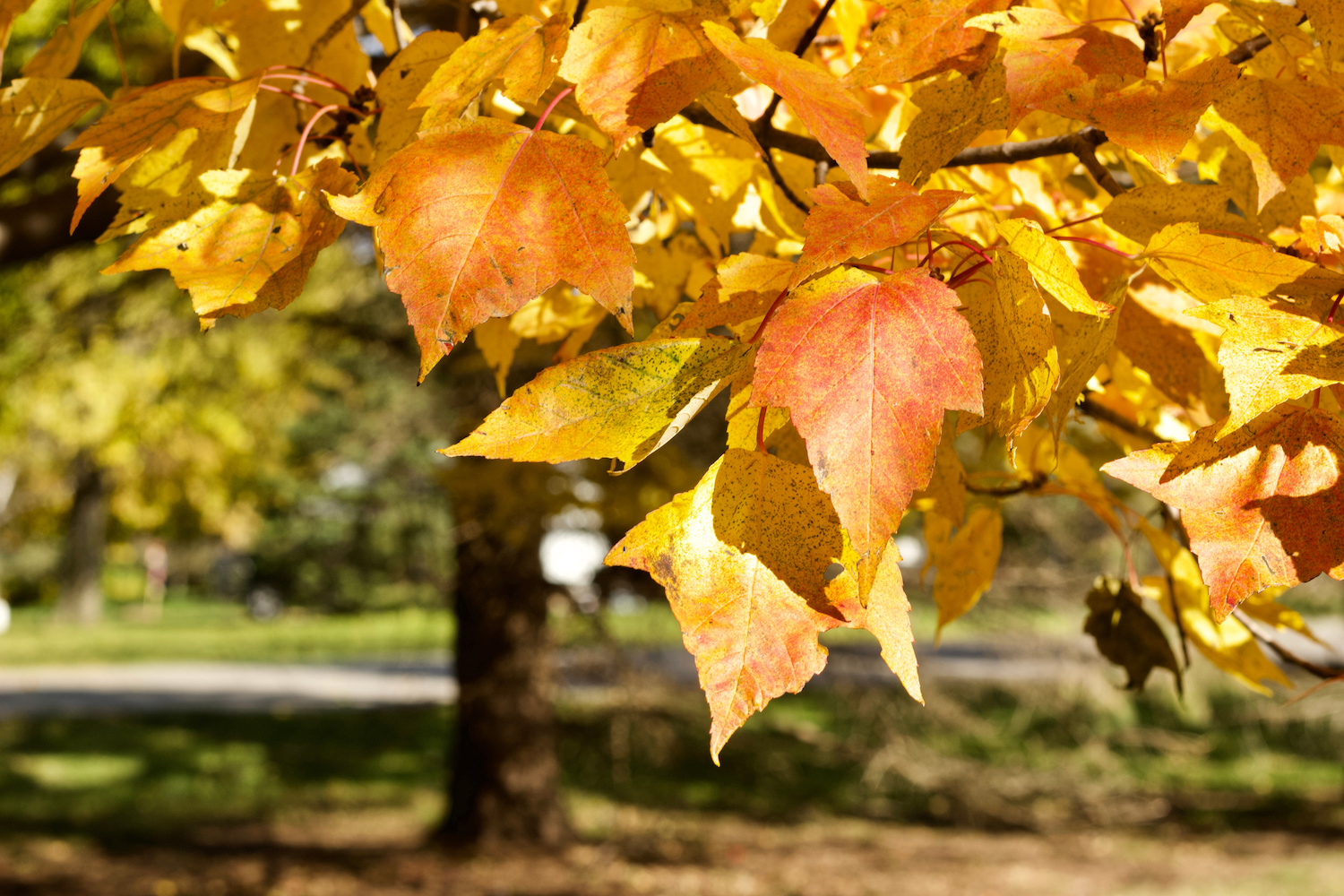
Maple Tree
acer rubrum
Whether red maples (acer rubrum) or sugar maple (acer saccharum) these popular native shade trees come into their own in fall when they are two of the principal trees that bring reds and oranges to New England’s landscape. Red maples get their name from their red flowers, seeds, twigs, and of course, their predominantly red fall foliage. Growing 40-60 feet tall, and tolerant of most growing conditions, but preferring moist soil, they make a handsome shade tree. Popular varieties include October Glory, which will turn brilliant red later than most, Red Sunset, which turns early and Redpointe, which with its pyramidal shape is narrower than most and therefore ideal for smaller spaces. Sugar maples are best known for being the tree whose sap is used to make syrup. They also make large shade trees with fiery fall colors, tending to offer yellows and oranges as well as shades of red. A couple of popular varieties include Green Mountain, which is a fast growing specimen and Legacy, which is more drought tolerant.
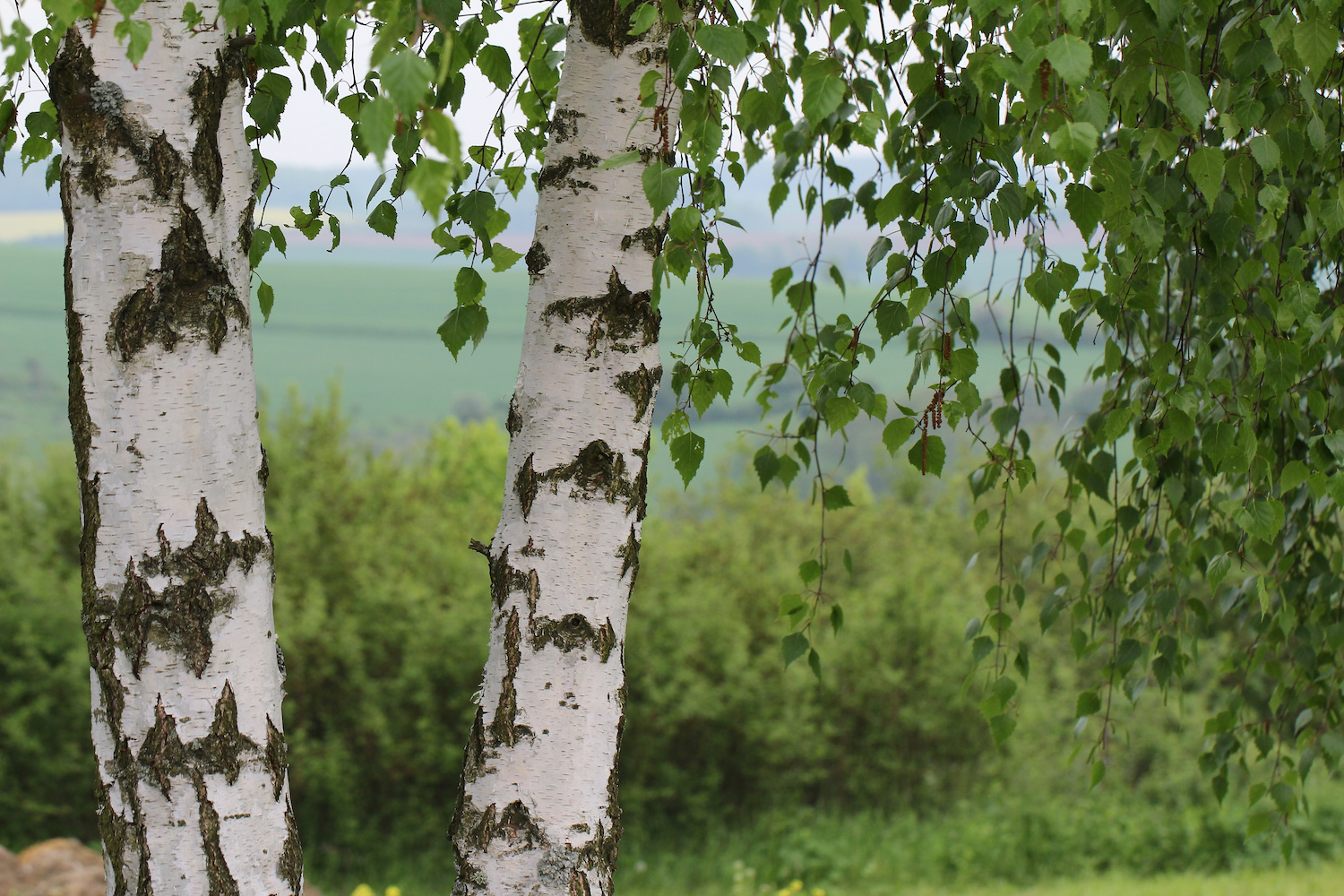
Birch Tree
betula
Birches (betula) are a popular landscape choice as they provide delicate foliage offering dappled shade; colorful bark for all-season interest, and attractive yellow fall foliage. Sold as either single or multi-stem specimens they will grow between 40-60 feet, although multi-stem trees do not reach these heights. Moist soil is preferred by some varieties such as river birch, but they are adaptable to average garden conditions. Popular choices include river birch (betula nigra), paper birch (betula papyrifera) and Himilayan white birch (betula utilis var. jacquemontii). Look out for river birch varieties Heritage and Duraheat and paper birch varieties Renaissance Oasis and Prairie Dream, or just the straight species for true native plantings.
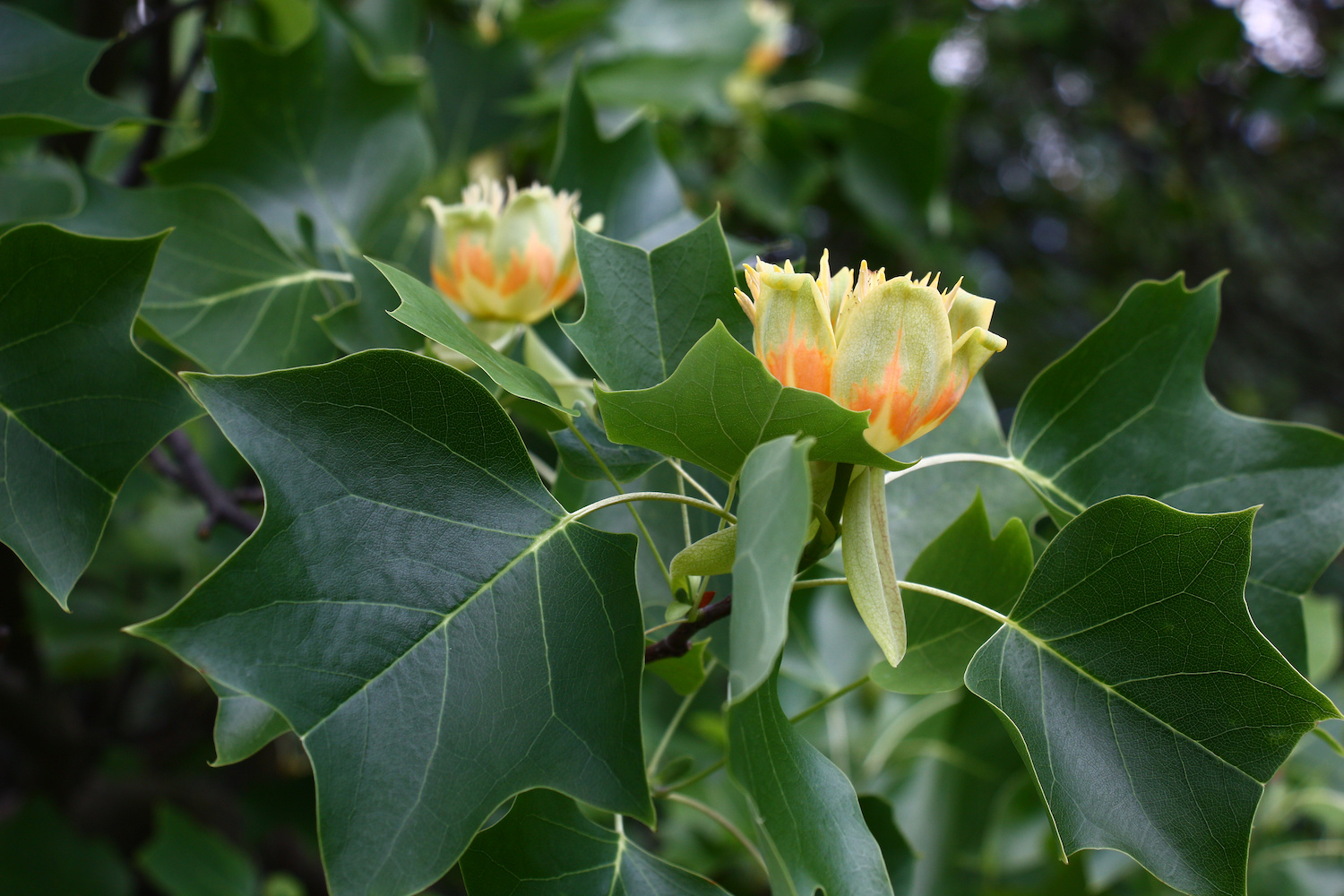
Tulip Tree
liriodendron tulipifera
The tulip tree (liriodendron tulipifera) is a truly impressive large tree. This native tree can grow to be as much as 100 feet tall, so it is not one for a small space. It gets its name for the shape of its flowers, which are a mixture of yellow, orange and green and are borne in early summer. Their coloring means you have to look into the star-shaped foliage to notice them, but they can be prolific on a mature tree. They also attract bees and hummingbirds and the tree itself hosts several butterfly larvae. In fall the foliage turns an attractive yellow, and the seed heads can remain throughout winter providing visual interest as they echo the shape of the earlier flowers. There are a couple of cultivars available as well: look for Arnold, which has a narrow growth habit and Emerald City, which matures to a smaller, more uniform shape.
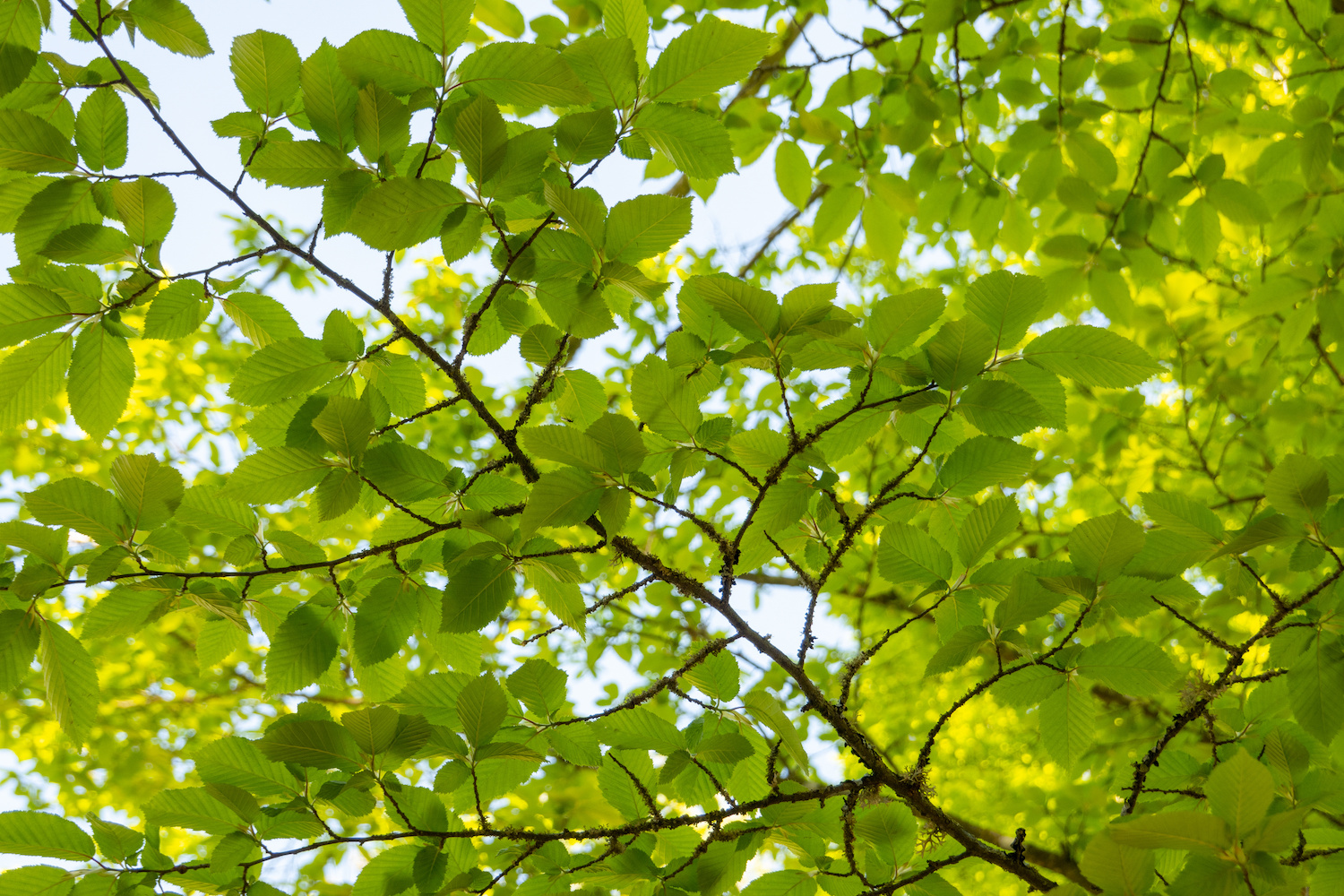
American Elm Tree
ulmus americana
American Elm (ulmus americana) was once a common street shade tree, with its vase-shaped form that would allow streets to be shaded, but still, allow passage of vehicles underneath. However, during the second half of the twentieth-century Dutch elm disease took a heavy toll on elms, and it is only in recent times that disease-resistant cultivars are available for planting. Fast growing, reaching heights of 60-80 feet, and having attractive yellow foliage in fall, they are again able to grace our streets and yards. Disease-resistant cultivars include Jefferson and Princeton.
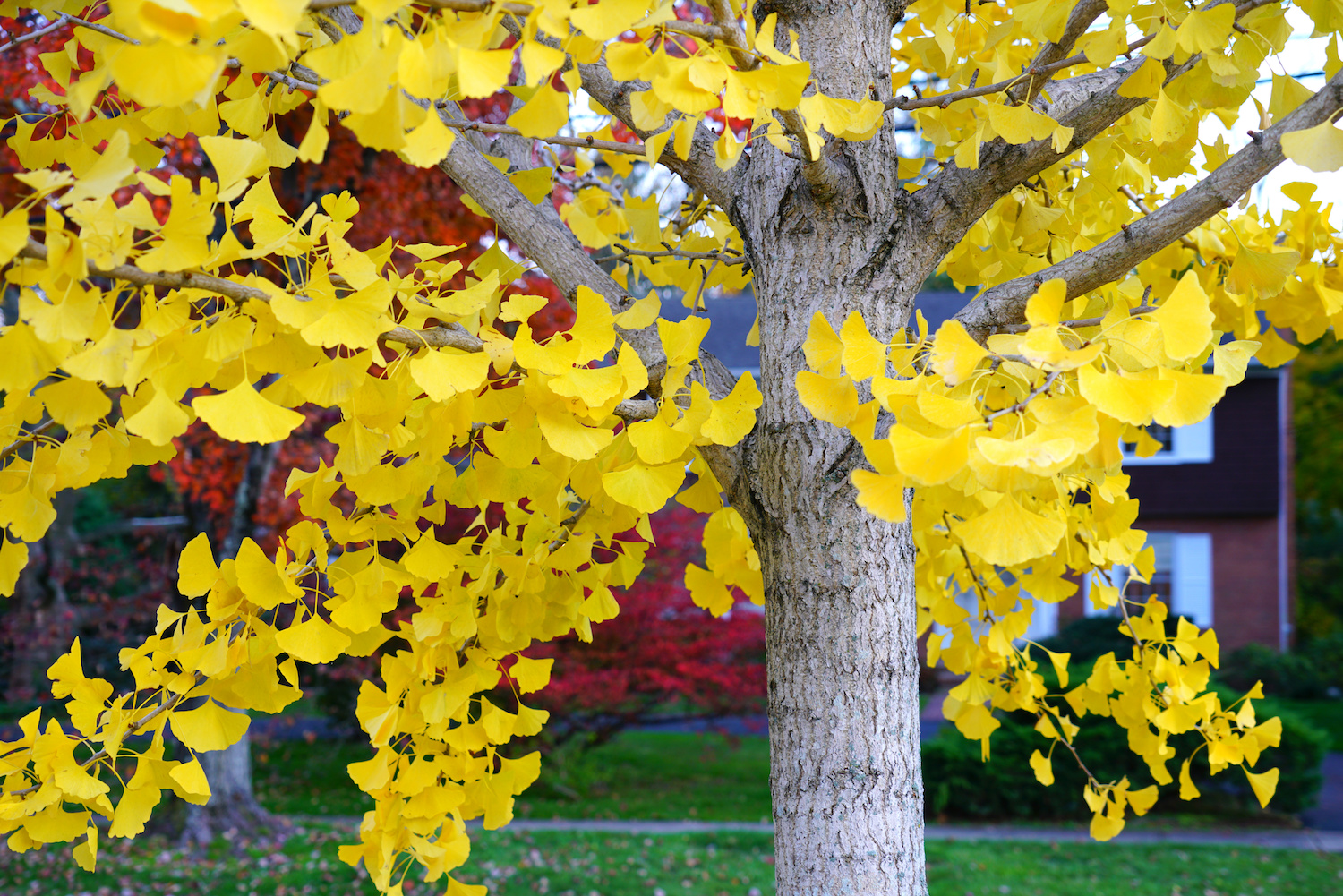
Ginkgo Tree
ginkgo biloba
Ginkgo (ginkgo biloba) is an attractive shade tree with distinctive fan-shaped leaves, that is easy to establish, being tolerant of the urban challenges of heat, drought, confined spaces, salt and pollutants. Remarkably, this is a living fossil, as fossils of gingko leaves have been found dating back 270 million years. Its foliage turns a brilliant golden yellow in fall, and it reaches a height of up to 50 feet. Large cultivars offered are Princeton Sentry, a narrow-formed variety, and Autumn Gold which has outstanding fall color.
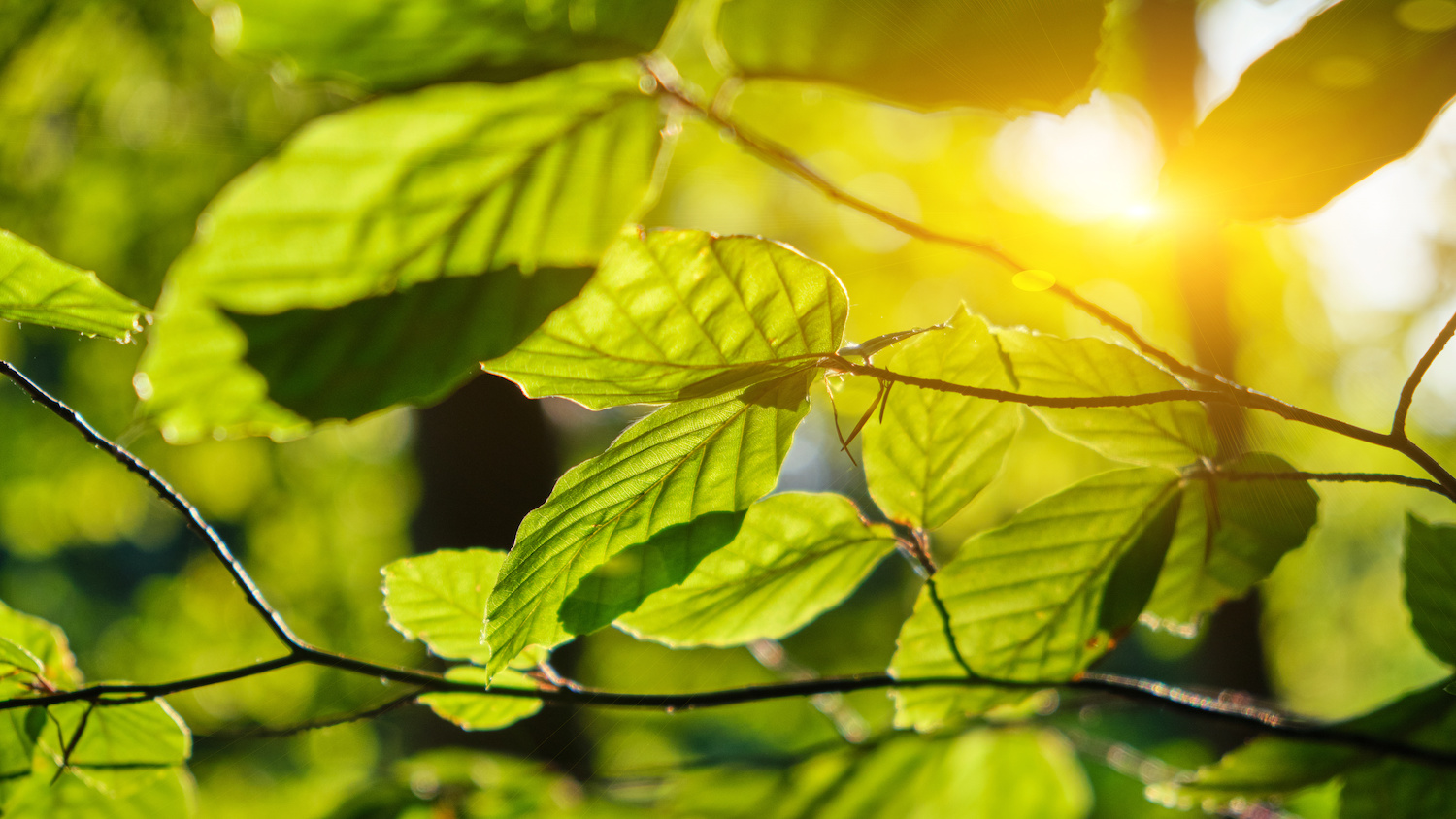
Beech Tree
fagus
Beech (fagus) is another tree that makes an impressive shade tree. While the native American beech (fagus grandiflora) can make for very dense shade, its European cousin (fagus sylvatica), whose canopy is not so dense, is often preferred for landscape settings. Reaching 50-60 feet tall and offering a variety of ornamental foliage often in shades of purple, it makes a noteworthy focal point in the landscape. Whether your preference is for a stately native, or the purple-colored European introductions such as Riversii, there is a beech to suit most tastes.a
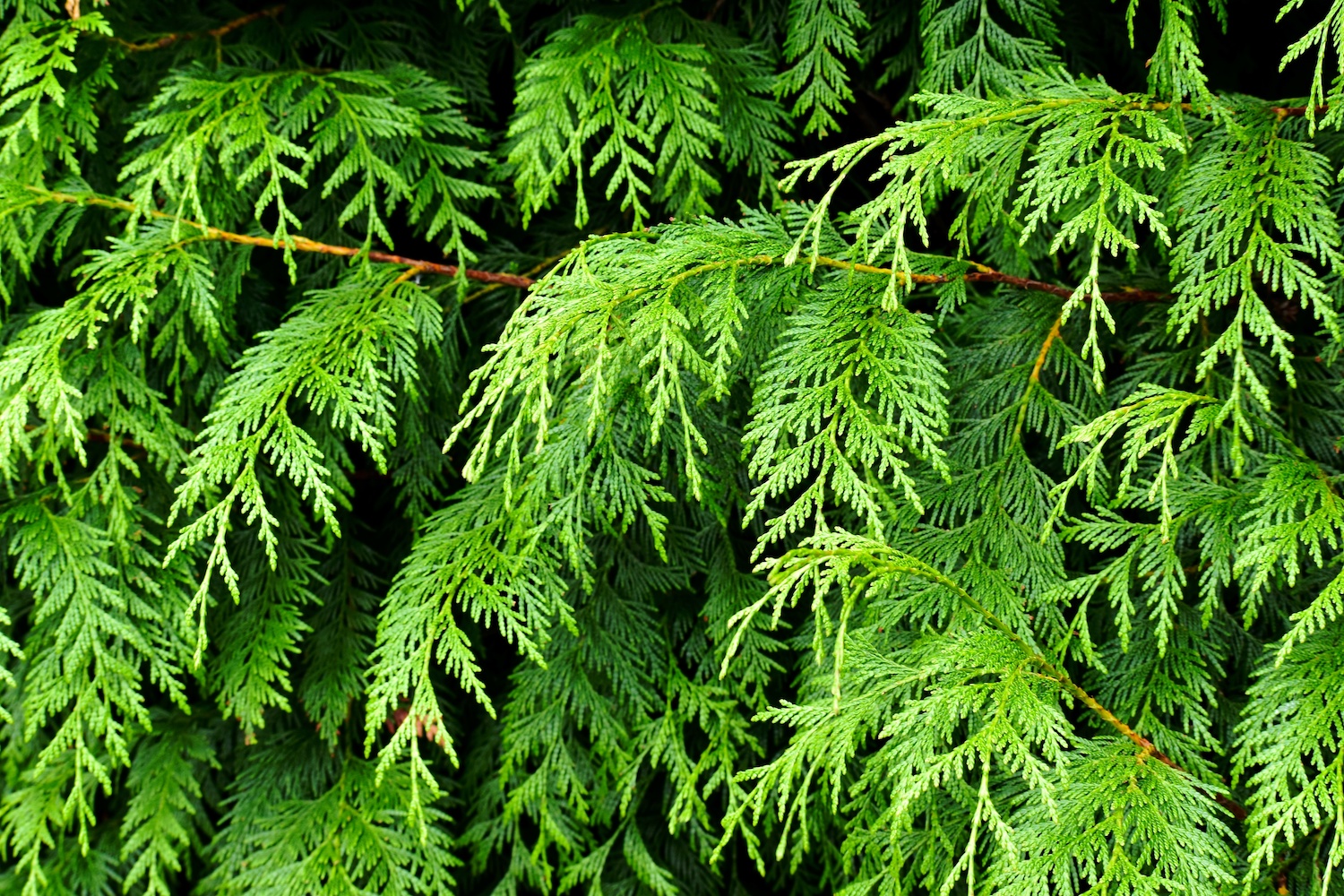
Western Red Cedar Tree
thuja plicata
Western red cedar (thuja plicata) is probably best known for being a popular privacy hedging tree. Green Giant is a fast growing hybrid cross between Western red and Japanese cedar, which lives up to its name as left to its own devices it will attain a height of 40-60 feet tall. Remaining narrow at a maximum of 15-18 feet wide, it is ideally suited for hedging and creating windbreaks. It can be pruned into a formal hedge – light trimming into new wood ensures a continued natural appearance of this tree.
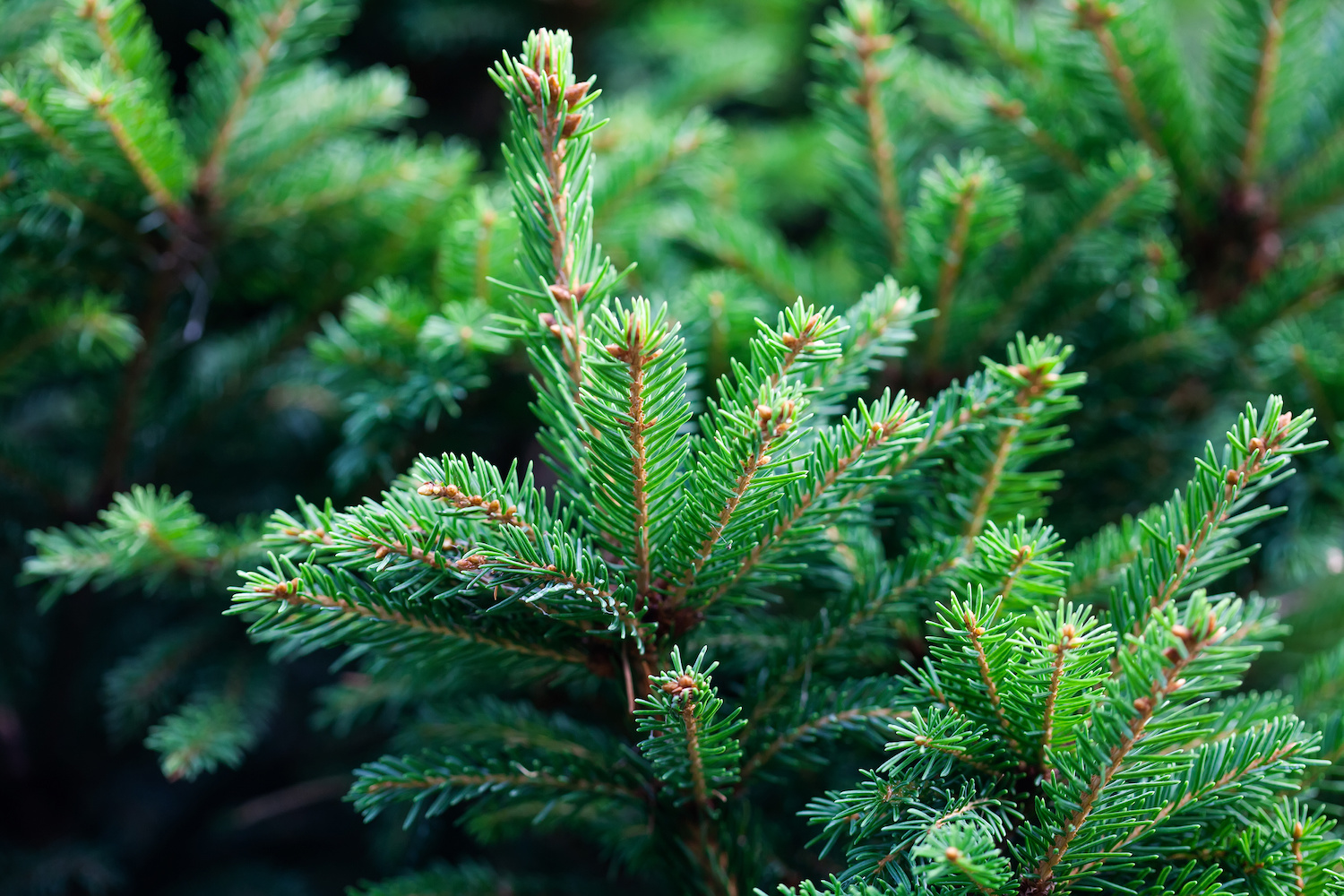
Norway Spruce Tree
picea abies
Norway spruce (picea abies), native to northern and central Europe, is another spruce popular in the landscape. With green needles and long pendulous cones when mature, it makes a perfect backdrop for more colorful plantings. While other evergreens are generally sold as Christmas trees in New England, it is a popular choice as such in Europe, and to this day the Norwegian city of Oslo gifts a large Norway spruce to Washington DC by way of thanks for American assistance during World War II.
If you would prefer a conifer that doesn’t have sharp needles, consider planting a white fir, abies concolor. With longer, soft needles that have a silvery green coloration it too makes a handsome addition to the landscape, and like the two spruce can be used for informal hedging and screening. Native to the mountains of western North America it will reach 50-60 feet tall.
These are just some of the large trees available for landscape planting. Others that can be considered include eastern white pine, and oaks, of which there are ten that are considered native to Massachusetts.


